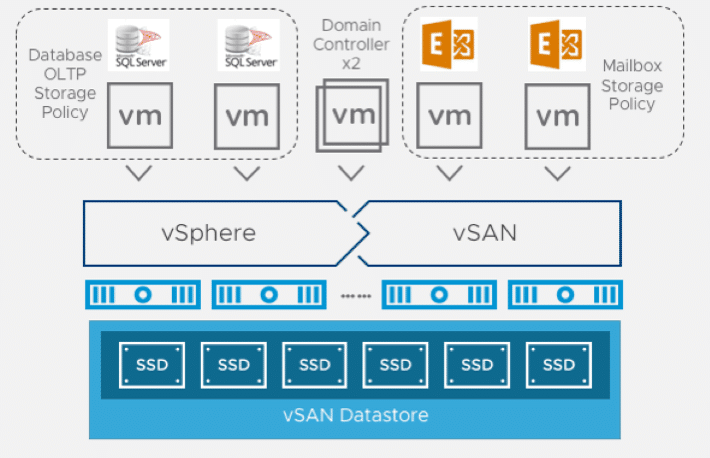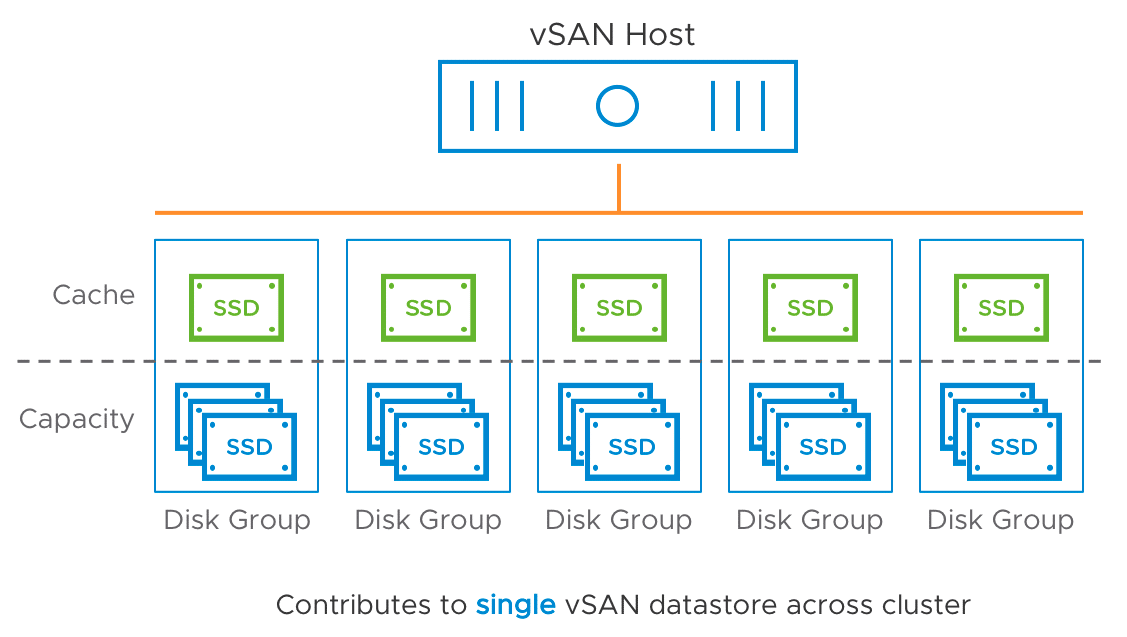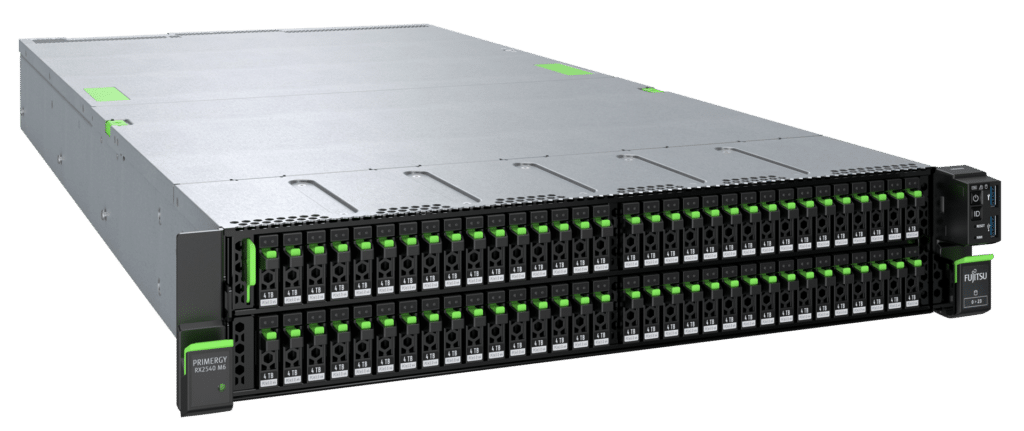Hyperconverged Infrastructure (HCI) systems powered by VMware vSAN lead the overall market for Q3 of 2021, according to the IDC Quarterly Worldwide Converged Systems Tracker. VMware vSAN accounted for a 41.5 percent market share, topping the other four HCI software vendors combined. Systems running VMware vSAN had a 17.7 percent year-over-year growth. The overall market growth for HCI vSAN was 14.3 percent.
Fujitsu RX2540 M6
Systems running VMware vSAN have outpaced other HCI vendors consistently and continue to grow at a higher rate, making it the most adopted HCI software on the market today. More than 30,000 customers and over 80% of Global 2000 have adopted VMware vSAN for their HCI solution.
WW Quarterly Converged Systems Tracker 2021 Q3
| HCI Software Vendor | 2021 Q3 Revenue (in $ Millions) | Market Share | Year Ago Revenue | Year over Year Revenue Change |
| VMware | $982.32 | 41.5% | $834.58 | 17.7% |
| Nutanix | $581.16 | 24.6% | $512.57 | 13.4% |
| Huawei | $111.24 | 4.7% | $91.51 | 21.6% |
| Cisco | $104.13 | 4.4% | $121.06 | -14.0% |
| HPE | $82.54 | 3.5% | $89.45 | -7.7% |
| Others | $504.09 | 21.3% | $420.16 | 20.0% |
| Total | $2,365.48 | 100.0% | $2,069.34 | 14.3% |
Source: IDC Q3 2021 Worldwide Converged Tracker dated December 13, 2021. Market share based on revenue and the company providing HCI systems software.
More on VMware vSAN
VMware vSAN, a software-defined storage solution supporting hyperconverged infrastructure, is integrated into VMware vSphere as a distributed software layer within the ESXi hypervisor. As organizations migrate to a hybrid-cloud model, VMware vSAN HCI offers the flexibility to utilize both on-prem and cloud architectures, reducing costs in hardware and taking advantage of existing experience without the need for retraining support and development staff.

HCI solutions powered by VMware consist of a single, integrated platform for storage, compute, and networking that builds on the foundation of VMware vSphere and VMware vSAN incorporating vCenter Server as a unified, extensible management solution.
vSAN integrates with the entire VMware stack, including features such as vMotion, HA, DRS, etc. VM storage provisioning and day-to-day management of storage SLAs can be controlled through VM-level policies set and modified on the fly. vSAN delivers enterprise-class features, scale, and performance, making it the ideal storage platform for VMs.

Each host contains flash drives (all-flash configuration) or a combination of magnetic disks and flash drives (hybrid configuration) that contribute cache and capacity to the vSAN distributed datastore. Each host has one to five disk groups, and each disk group contains one cache device and one to seven capacity devices.
An early entry, native encryption for HCI is delivered through vSphere and vSAN. A highly available control plane is built-in to minimize risk without sacrificing flash storage efficiencies. VMware continues to add features to the vSAN architecture focusing on security, cost, and performance.
vSAN technology lowers TCO by providing highly available, powerful, and economical stretched clusters that are 60% less than leading legacy storage solutions. Operational costs are also reduced with intelligent operations with 1-click hardware updates for predictable hardware experience and pro-active cloud health checks for custom, real-time support.
HCI Market in Flux
vSAN is the clear leader based on this data, closing in on nearly a billion in quarterly revenue. This is despite vSAN only seeing modest updates over the past year or two. While still important to VMware, vSAN tends to be obfuscated as a product in VMware’s marketing strategy. VMware often leads with solutions-based marketing around things like Kubernetes where vSAN may be involved but isn’t the lead story.
Nutanix has shown some growth as well, which is interesting as Nutanix is in the midst of a massive leadership overhaul. The new team is still going in and we won’t see their impact for some time as a result. But it must be said that if nothing else, Nutanix has been resilient, and is still a leading vSAN alternative.
Another interesting note is that Cisco and HPE are both sliding. Cisco is having limited success with their HyperFlex system, folding it in with their cloud-consumption model approach. HPE is fighting through some challenges as they try to consolidate their many HCI and storage offerings into the Alletra platform.
Unfortunately, one of our favorites from a performance perspective, Microsoft Azure Stack HCI, doesn’t get a line of its own due to IDC methodology. IDC only tracks the new Azure Stack HCI OS (discussed on this podcast), not any HCI that was sold on Server 2019 or 2016.





 Amazon
Amazon